Unlock the Flavor, Health, and Texture Secrets of Two Pantry Staples
If you’ve ever stood in the spice aisle staring blankly at the rows of salt options, you’re not alone. Kosher salt vs sea salt—what’s the actual difference, and why does it matter in your cooking, health, and flavor game?
For the modern home chef, choosing the right type of salt isn’t just about taste—it’s about texture, mineral content, health impact, and even presentation. Whether you’re seasoning a juicy steak, finishing a chocolate chip cookie, or balancing the flavors in a fresh salad dressing, your choice of salt can elevate or dull the dish.
In this guide, we’ll break down everything you need to know about kosher salt vs sea salt. We’ll compare their origins, taste profiles, texture differences, mineral benefits, and more. By the end of this article, you’ll not only be equipped to make the better culinary choice—you’ll also discover the top Amazon picks for sea salt that thousands of home chefs are loving in 2025.
What Is Kosher Salt?
Kosher salt is a coarse-grained type of salt known for its large, flaky salt crystals and clean taste. In the debate of kosher salt vs sea salt, kosher salt often leads in professional kitchens for its superior control. Unlike table salt, which is highly refined and often packed with iodine, anti-caking agents, and additives, kosher salt is typically left unprocessed, giving it a pure taste with no metallic aftertaste.
The name kosher salt comes from its historical use in making meat kosher, particularly due to its ability to draw out blood during the koshering process. Thanks to its flake texture and larger crystal surface area, kosher salt performs exceptionally well in dry brining and seasoning. It’s worth noting, though, that not all kosher salt is certified kosher—the term primarily refers to this kind of salt’s texture and traditional use.
In today’s kitchens, kosher salt is an essential pantry item for both home cooks and professional chefs. Whether you’re salting pasta water, dry brining poultry, or evenly sprinkling salt onto roasted vegetables, kosher salt gives you tactile control. Its large, uneven flakes dissolve slowly and evenly, making it ideal for cooking or baking. In the ongoing comparison of kosher salt vs sea salt, this type of salt wins for versatility, especially when you need exact seasoning without the bitterness found in some iodized salt alternatives.
Key Features of Kosher Salt:
- Clean, sharp taste: Unlike iodized table salt, kosher salt has a bright, clean flavor that enhances food without leaving a metallic aftertaste.
- Easy to control during seasoning: Thanks to its larger crystals, you can literally feel the amount you’re using in your fingers, making it ideal for chefs who prefer to season by touch.
- Dissolves slowly—ideal for dry brining and curing: Its slow-dissolving nature makes kosher salt perfect for techniques like dry brining meats, where gradual salt absorption enhances tenderness and flavor.
- Uniform flake size (in some brands): While different brands may vary in crystal shape and size, many offer consistent flakes that make even seasoning easier.
- Usually iodine-free, making it suitable for those avoiding additives: For those seeking a more natural, additive-free salt for everyday use, kosher salt is a top choice.
Another reason kosher salt stands out is its natural, unprocessed taste. Because it typically contains no iodine or anti-caking chemicals, it offers a purer, more refined flavor that many health-conscious cooks prefer. It’s no wonder that in the debate of kosher salt vs sea salt, kosher salt often wins in recipes requiring precision and balance, especially when seasoning meats or baking.
What Is Sea Salt?
Sea salt, as the name suggests, is derived from the evaporation of seawater, leaving behind salt crystals rich in trace minerals. These minerals—like magnesium, potassium, and calcium—are often lost during the refining of table salt, but they’re preserved in sea salt, contributing to both its flavor and potential health benefits. In the kosher salt vs sea salt comparison, sea salt is often chosen for its artisan appeal and broader range of minerals found.
Unlike kosher salt, which features large, diamond crystal-shaped flakes, sea salt comes in a variety of shapes and sizes—from fine granules for baking to coarse salt for grinders and flaky sea salt for finishing gourmet dishes. Depending on the region where it’s harvested, sea salt comes in hues of white, grey, pink, or black. This not only affects the taste but also the visual presentation of the final dish—one reason sea salt is often used as a finishing salt.
In terms of texture, sea salt can vary from delicate flakes to chunky coarse texture grains. This makes it incredibly versatile in the kitchen. Whether you’re sprinkling it over steaks, using it to garnish chocolate desserts, or mixing it into doughs, sea salt offers a mild briny flavor and a satisfying slight crunch. In the culinary face-off between kosher salt vs sea salt, sea salt stands out for its natural source, evaporation-based harvesting, and the subtle minerals found that contribute to both clean taste and potential wellness benefits.
Key Features of Sea Salt:
- Mildly briny taste: Its flavor is more complex and mellow compared to table salt, offering a slightly oceanic hint that enhances natural food flavors.
- Rich in trace minerals: The presence of essential minerals like magnesium and potassium not only improves flavor but also makes sea salt a healthier choice for many.
- Comes in fine, coarse, or flake textures: The versatility of sea salt allows it to be used in everything from baking to seasoning to finishing gourmet plates.
- Can have varying colors (pink, grey, black): These colors not only enhance the look of dishes but also represent different regional origins and mineral compositions.
- Often used in finishing dishes for visual appeal: Gourmet chefs often prefer sea salt flakes for finishing meats, pastries, and even chocolates, thanks to their eye-catching appearance and crunch.
One of the most appealing aspects of sea salt is how it reflects the geographic and environmental conditions of its source. Whether it’s hand-harvested from the Mediterranean, the Himalayas, or the coasts of Brittany, each variety tells a story—making it a premium ingredient in high-end culinary experiences. When evaluating kosher salt vs sea salt, many food lovers gravitate toward sea salt for its artisan vibe, health benefits, and aesthetic value on the plate.
Moreover, with the rise of clean eating trends, natural sea salt has gained popularity as a go-to for those avoiding heavily processed foods. It’s not uncommon to see it promoted in recipes for detox meals, low-sodium diets, and holistic health plans due to its perceived health benefits and more natural production process.
Kosher Salt vs Sea Salt: A Detailed Comparison
In the ongoing kosher salt vs sea salt debate, it’s essential to understand how these two salts differ in terms of taste, texture, source, mineral content, and specific use cases. Both salts bring unique qualities to the table, and knowing when and how to use each can elevate your cooking to new levels. Let’s break down the differences:
1. Taste
- Kosher Salt: Kosher salt has a pure, clean, sharp saltiness that doesn’t overpower other flavors. Its neutral flavor profile makes it ideal for precise seasoning without affecting the overall balance of a dish. Whether you’re seasoning a delicate fish or prepping a juicy steak, kosher salt enhances natural flavors, making it a favorite for professional chefs and home cooks alike. Its ability to evenly distribute saltiness without being too intense or harsh is one of the reasons it’s often preferred in kosher salt vs sea salt comparisons.
- Sea Salt: On the other hand, sea salt has a more complex flavor profile, which can range from mildly briny to slightly mineral-rich, depending on where it’s sourced. Sea salt from regions like Celtic or French grey often carries a unique earthy flavor, which can add depth to dishes like roasted vegetables or artisanal bread. The subtle trace minerals give it a richer taste, making it ideal for more gourmet dishes where flavor nuance is key. In the kosher salt vs sea salt debate, sea salt wins when it comes to its depth and complexity, especially for finishing dishes or creating a unique flavor experience.
2. Texture
- Kosher Salt: One of the most significant advantages of kosher salt is its large, irregular flakes, which are easy to pinch and sprinkle. This provides excellent tactile control during seasoning, allowing for more precise measurements. Kosher salt’s larger flakes also mean it dissolves slowly, which can be an advantage for dry brining, curing, or seasoning large cuts of meat. In the kosher salt vs sea salt debate, many chefs prefer kosher salt because its texture allows them to manage salt levels with greater control.
- Sea Salt: In contrast, sea salt comes in a variety of textures, ranging from delicate flakes to coarse crystals. Some varieties, like Fleur de Sel, have a crunchy texture that’s perfect for adding as a finishing touch to dishes, offering an exciting contrast to the softness of the food. Fine-grain sea salt is great for baking, where precise control over salt amounts is necessary. When using sea salt in the kosher salt vs sea salt comparison, sea salt often wins in terms of versatility—its texture can be adapted for different culinary needs.
3. Source and Processing
- Kosher Salt: Kosher salt is typically mined from underground deposits and processed to create uniform flakes. The salt is usually stripped of any trace minerals, leaving it almost entirely as sodium chloride, which is why it has such a pure, clean taste. Because of its controlled processing, kosher salt is often favored by professional chefs who require consistency in their seasoning.
- Sea Salt: In contrast, sea salt is harvested from evaporated seawater, often using more traditional methods that may involve minimal processing. As a result, sea salt retains many of its natural trace minerals, giving it its unique colors and textures. These methods can vary depending on the region, with some producers using environmentally friendly processes that preserve the surrounding ecosystems. Sea salt’s minimal processing and eco-friendly sourcing give it an edge when compared to kosher salt in terms of its sustainability and natural purity. So, in the kosher salt vs sea salt debate, sea salt wins in the environmental sustainability department.
4. Mineral Content
- Kosher Salt: The mineral content of kosher salt is minimal, as it is predominantly made up of sodium chloride. This lack of trace minerals makes kosher salt an excellent choice when you want the purest form of salt with no added flavors or nutrients. While kosher salt is great for seasoning and brining, it doesn’t offer the health benefits of sea salt, which may be an important consideration for those looking to increase their intake of trace minerals like magnesium or calcium.
- Sea Salt: On the other hand, sea salt is known for its higher content of trace minerals, such as magnesium, calcium, and potassium, which contribute to its flavor and health benefits. These minerals are believed to support various health functions, including maintaining proper hydration and supporting heart health. For people who are conscious of their mineral intake and prefer a more holistic approach to seasoning, sea salt is a healthier option. In the kosher salt vs sea salt debate, sea salt stands out as a more nutritious choice because of its diverse mineral profile.
5. Use Cases
- Kosher Salt: Because of its sharp saltiness and ability to dissolve slowly, kosher salt is ideal for brining, seasoning meats, making soups, and even for adding salt to pasta water. It is often used in dry rubs for meats because it adheres to the surface and draws out moisture, which helps with the flavor and texture. The even granularity and lack of additives also make it an excellent choice for koshering meat, as its clean and pure taste complements the process. Overall, kosher salt is versatile, but it shines most in precise seasoning and preparing large dishes that require controlled salt application.
- Sea Salt: Sea salt, however, is best used for finishing dishes—it is sprinkled over meals just before serving to add texture, color, and a burst of flavor. Its crunchy texture and natural mineral content make it the perfect choice for topping dishes like steaks, salads, and even chocolates. It’s also popular in baking, where its delicate flakes can add a special touch to breads and pastries. Sea salt’s versatility allows it to be used in both sweet and savory dishes, elevating the final presentation and flavor profile. In the kosher salt vs sea salt debate, sea salt wins as the salt of choice for finishing gourmet dishes.
| Feature | Kosher Salt | Sea Salt |
|---|---|---|
| Source | Mined | Evaporated seawater |
| Texture | Flaky, coarse | Flaky to fine or coarse |
| Flavor | Clean and sharp | Briny, mineral-rich |
| Mineral Content | Low | High (Magnesium, Calcium) |
| Best Uses | Cooking, brining, meats | Finishing, baking, visual |
Health Benefits of Sea Salt
In the ongoing discussion of kosher salt vs sea salt, many health-conscious cooks consider sea salt the better choice—not just for its flavor profile, but also for its natural composition, trace minerals, and minimal processing. Compared to iodized salt and highly refined table salt, sea salt is often regarded as the healthier type of salt.
✔ Contains Trace Minerals
Unlike processed table salt or chemically altered varieties of iodized salt, sea salt retains important minerals found in seawater through the natural evaporation process. These trace minerals include:
- Magnesium – supports muscle and nerve function
- Calcium – essential for bone health and cellular function
- Potassium – helps regulate fluid balance and blood pressure
These minerals are generally stripped away in heavily refined salts like table salt, but remain in sea salt due to its coarse texture and less intrusive processing methods. In contrast, kosher salt, while valued for its flake structure and clean taste, lacks the nutritional edge provided by minerals found in sea salt.
✔ Less Processed, More Natural
Sea salt is made through a traditional evaporation of seawater, often sun-dried and hand-harvested, preserving its natural mineral content. Unlike salt that comes from underground mines—like some types of kosher salt—sea salt undergoes minimal refining, which means fewer additives, less exposure to anti-caking agents, and no artificial iodine.
This natural type of salt is ideal for those aiming to reduce chemical intake in their diets. When choosing between kosher salt vs sea salt, those prioritizing wellness and ingredient purity often opt for sea salt.
✔ Better Taste with Less Salt
Due to its coarse salt texture and intense mineral depth, sea salt is often used in smaller amounts to achieve the same flavor impact as other salts. Its slight crunch, pure taste, and visual appeal as a finishing salt mean that you often need just a sprinkle to enhance your dishes.
In the context of kosher salt vs sea salt, sea salt often offers a cleaner finish, especially when used in salads, grilled veggies, desserts, or to garnish meats. While kosher salt excels in precision for cooking and baking, sea salt shines when flavor complexity and presentation matter.
Pro Tip: Even with all the benefits of sea salt, moderation is key. The American Heart Association recommends no more than 2,300 mg of sodium chloride per day—whether it’s sea salt, kosher salt, or iodized table salt.
“Sea salt offers trace minerals that kosher salt lacks, which can slightly enhance your mineral intake. But the key is moderation—whether it’s sea, kosher, or table salt, overuse can still lead to high sodium intake.”
— Dr. Elena Morris, Registered Dietitian, Wellness Institute
Cooking with Kosher Salt
In the conversation of kosher salt vs sea salt, kosher salt continues to be a go-to in professional kitchens for a reason—it’s all about control, consistency, and a clean taste.
✔ Pinch Precision
The coarse texture and large flake structure of kosher salt give chefs exceptional tactile control. Whether you’re prepping meats or vegetables, being able to pinch and sprinkle the amount of salt needed precisely is a game changer—especially compared to finer iodized salt varieties.
✔ Even Dissolution
Unlike some coarse salt varieties or iodized salt that may clump, kosher salt dissolves evenly into food. This makes it ideal for brining, marinades, or any dish where sodium chloride distribution needs to be consistent without overpowering the flavor.
✔ Perfect for Meat
The flake shape of kosher salt is especially effective for dry brining steaks, poultry, and fish. It draws out moisture gently while seasoning deeply, making it perfect for meat kosher preparation or flavor-intense recipes where precision matters.
✔ Consistent Flavor
Free from additives and iodine, kosher salt delivers a pure taste that won’t leave a metallic aftertaste. In the kosher salt vs sea salt matchup, this clarity makes it the winner for chefs aiming for balance and simplicity in their dishes.
Recommended Uses:
- Salting pasta water
- Brining meat for texture and tenderness
- Seasoning vegetables and roasted dishes
- Flavoring soups, stews, and stocks
Cooking with Sea Salt
Sea salt does more than just season—it brings visual appeal, mineral richness, and culinary artistry to the table. When comparing kosher salt vs sea salt, this kind of salt is often favored for finishing salt roles due to its flaky texture and trace minerals.
✔ Finishing Touch
Flaky sea salt is ideal for the final sprinkle on dishes like avocado toast, brownies, or roasted veggies. Its slight crunch and crystalline texture not only boost flavor but also enhance presentation.
✔ Baking Boost
Fine sea salt is often used in baking, where it blends smoothly into doughs and batters. Its subtle briny notes can elevate cookies, cakes, and breads. In fact, many bakers swap table salt for finely ground sea salt for a more natural, clean taste.
✔ Visual Appeal
Varieties like Hawaiian red salt, fleur de sel, or Maldon add not only flavor but beauty. They serve as a garnish that signals refinement and intention—especially on grilled meats, chocolate desserts, and citrus-based dishes.
Recommended Uses:
- Topping desserts (caramels, cookies, brownies)
- Finishing grilled meats and seafood
- Sprinkling over roasted vegetables
- Enhancing chocolate, citrus, and herbal recipes
Common Myths about Sea Salt vs Kosher Salt – Debunked
Myth 1: Sea salt is sodium-free
Fact: All salt contains sodium. Sea salt has slightly lower sodium per volume due to its larger crystals but is not sodium-free.
Myth 2: Kosher salt is religiously blessed
Fact: It’s used in the koshering process, but not necessarily religiously certified.
Myth 3: All salts are the same
Fact: Texture, mineral content, and processing method significantly change taste and use case.
Myth 4: You can substitute salts 1:1
Fact: Because of differing flake sizes and densities, substitutions need adjustments. Always measure by weight, not volume.
Top 5 Sea Salt Products on Amazon [2025 Picks]
| Product Name | Type | Best Use | Price Range | Rating |
| TIDMANS NATURAL ROCK SALT | natural Sea Salt | Finishing, salads | $$ | ⭐⭐⭐⭐⭐ |
| Maldon Sea Salt Flakes | Flake Sea Salt | Grilling, desserts | $$ | ⭐⭐⭐⭐⭐ |
| Le Paludier Celtic Sea Salt Coarse | Coarse-textured | Cooking, baking | $ | ⭐⭐⭐⭐☆ |
| SaltWorks Fleur de Sel | Moist Sea Salt | Finishing, chocolates | $$$ | ⭐⭐⭐⭐⭐ |
| OXO Salt Grinder | Accessory | Grinding sea/kosher salt | $$ | ⭐⭐⭐⭐☆ |
1. TIDMANS NATURAL ROCK SALT
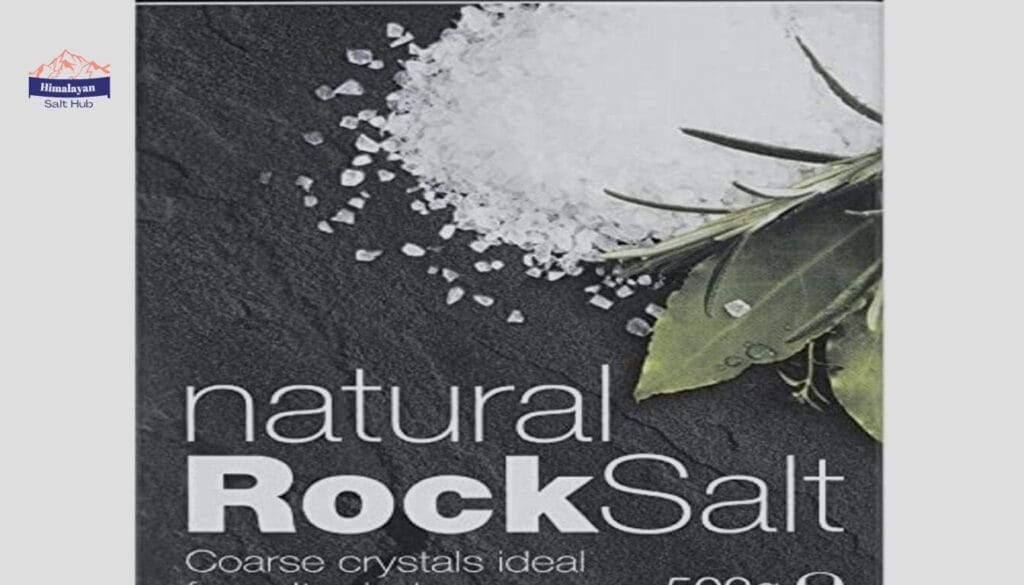
Key Features:
- Natural rock salt with no additives
- Coarse texture for salt mills and grinders
- Packaged in a 500g resealable container
- Amazon’s Choice product with strong ratings
Pros:
- Clean, natural taste
- Perfect for refillable grinders
- Trusted and well-reviewed brand
Cons:
Smaller pack size compared to bulk options
2. Maldon Sea Salt Flakes
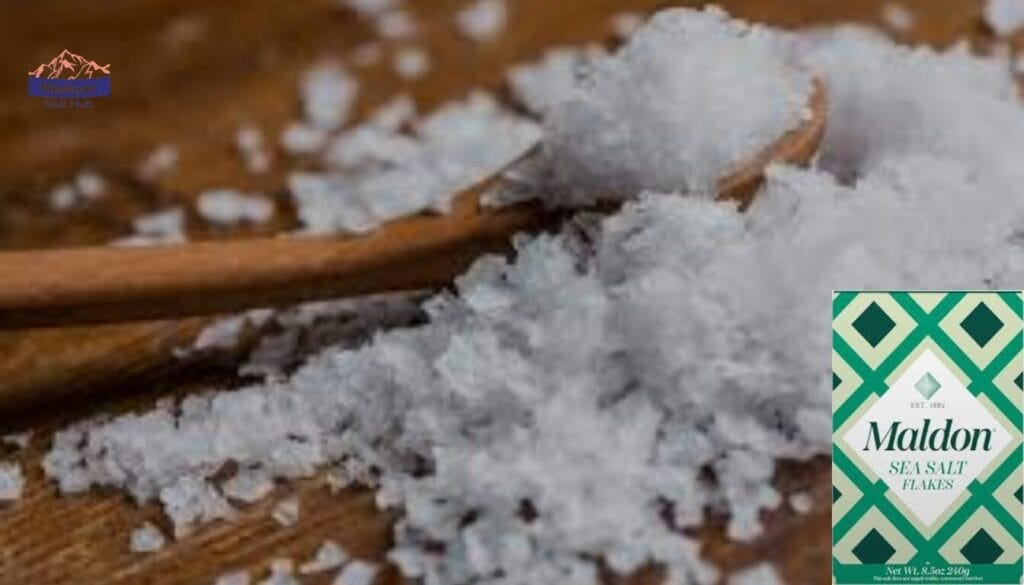
The gold standard in flaky finishing salts, loved by chefs worldwide.
Key Features:
- Iconic pyramid crystals
- Handcrafted in the UK
- Adds crunch and presentation value
Pros:
- Excellent for finishing steaks
- Vegan and kosher certified
- Elegant resealable box
Cons:
- Premium pricing
- May need crushing for some recipes
3. Le Paludier Celtic Sea Salt Coarse
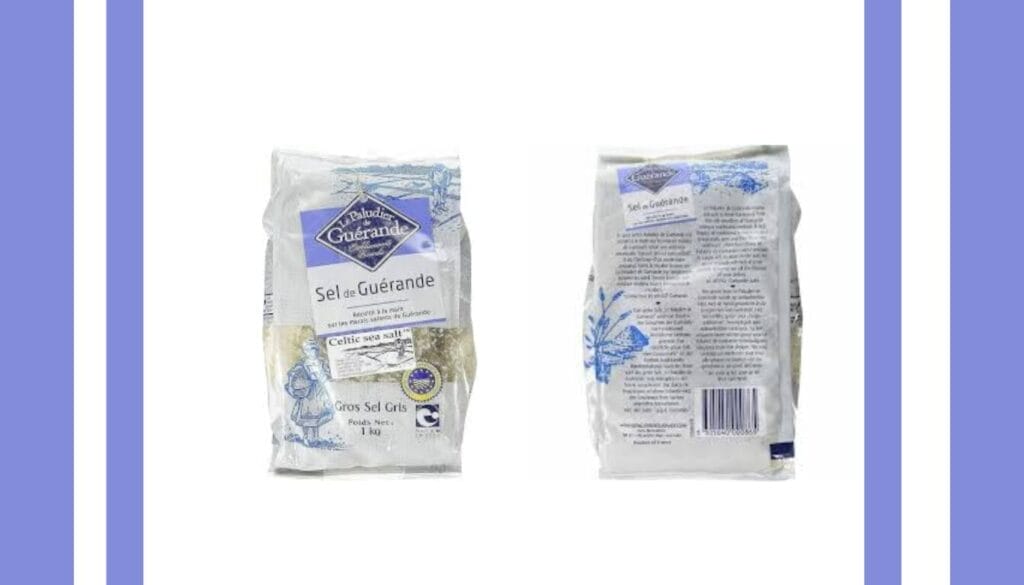
Key Features:
- Coarse-textured sea salt ideal for grinding or brining
- Hand-harvested from salt marshes in Brittany, France
- 100% natural and additive-free
- Vegan and unrefined
Pros:
- Rich in natural minerals
- Large pack size—great value for bulk use
- Sustainably sourced using traditional techniques
Cons:
Bulk packaging may be too large for occasional use
Coarse crystals may require grinding
4. SaltWorks Fleur de Sel
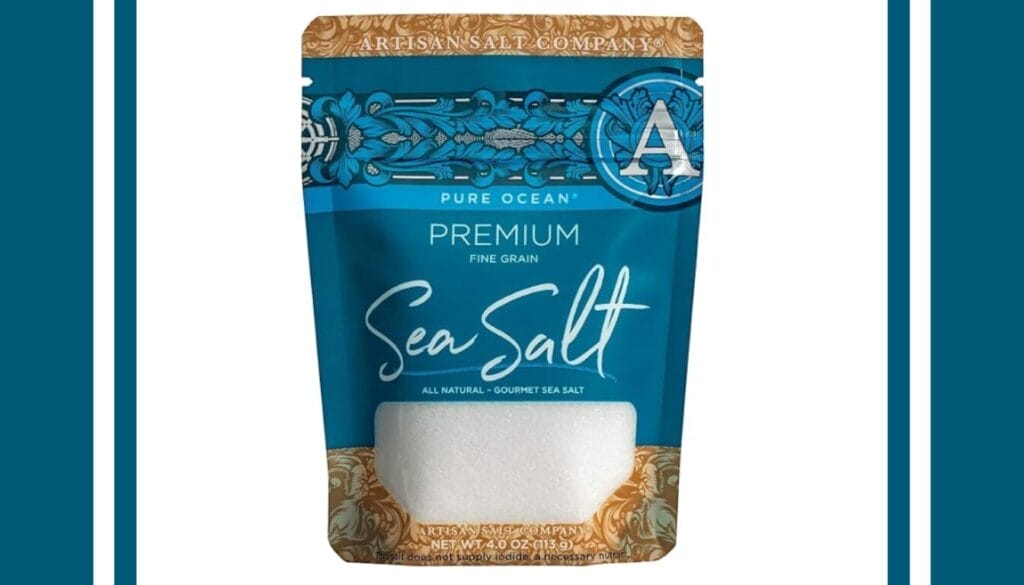
Delicate, moist salt hand-harvested from French salt beds.
Key Features:
- Top-tier finishing salt
- Natural moisture preserved
- Sealed glass jar packaging
Pros:
- Beautiful texture
- Adds depth to desserts
- Elegant presentation
Cons:
- Fragile container
- Higher price per ounce
5. OXO Good Grips Salt Grinder – Stainless Steel
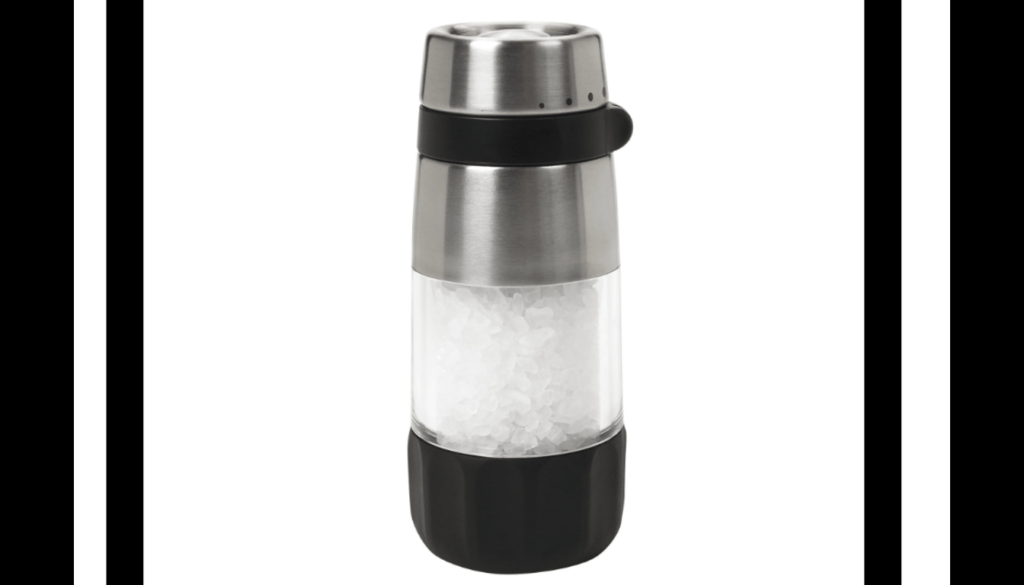
Enhance your salt game with a stylish, adjustable grinder.
Key Features:
- Stainless steel & clear acrylic
- Adjustable grind settings
- Mess-free bottom cap
Pros:
- Easy refill mechanism
- Sleek design
- Works with all salt types
Cons:
- Slightly heavy
- Hand-wash only
Final Verdict: Kosher Salt vs Sea Salt – Which One Wins?
The truth is—there’s no clear winner, just different tools for different culinary moments.
Choose Kosher Salt If You:
- Want precision and control in cooking
- Frequently brine or cure meats
- Prefer a clean, sharp saltiness
Choose Sea Salt If You:
- Care about trace minerals and presentation
- Love finishing touches and gourmet aesthetics
- Bake frequently or top desserts with flair
Ideally, every well-stocked kitchen should have both kosher and sea salt in their pantry.
FAQ:
Q1: Can I use sea salt instead of kosher salt in recipes?
A: Yes, but measure by weight, not volume. Sea salt crystals are often denser or lighter than kosher flakes, which can affect salinity.
Q2: Is sea salt healthier than kosher salt?
A: Sea salt contains more trace minerals like magnesium and potassium. However, both have similar sodium content, so moderation is still key.
Q3: Which salt is better for baking?
A: Fine sea salt is ideal for baking, while kosher salt can be used in savory doughs or when specific recipes call for it.
Q4: Does kosher salt have iodine?
A: Most kosher salt is iodine-free, which is preferred by many cooks who want a pure, clean flavor without metallic undertones.
🔗 Related Reads You Might Like:
- Kosher Salt Vs Seat Salt – Food network
- when to use Kosher Salt Vs Sea Salt in your cooking
- Why Himalayan Salt?
Ready to upgrade your salt game in 2025? Whether you’re a foodie, a wellness enthusiast, or a curious home cook, the right salt can transform your meals.
Explore the best Amazon picks above, try out a new salt variety this week, and experience how something so small can make a world of difference.
Which One Do You Prefer?
We’d love to hear from you! Do you prefer cooking with kosher salt or sea salt? What’s your favorite dish to season?
💬 Drop your answer in the comments below!

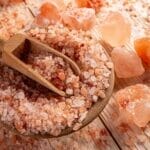




0 Comments